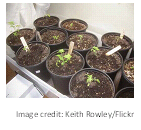Tomatoes are the most popular vegetable to have in your garden. Tomatoes are versatile vegetables that are very nutritious (high in lycopene – an anti-oxidant and the reason why tomatoes are red in color). Lycopene is made more bioavailable through processing of tomatoes (tomato paste has four times more bioavailable lycopene than in fresh tomatoes). There is substantial scientific and clinical research that goes out to prove a positive correlation between lycopene consumption and general health. Research suggests the possibility of lycopene reducing the incidence of cardiovascular disease, cancer, diabetes and osteoporosis.
Now if that\’s not enough reason to make you want to plant tomatoes in your garden, just take the fact that tomatoes are great addition to taste in your cooking and in general health. Below are some facts about tomato plants that you should be aware of before you undertake this project
- Days to Maturity
Tomatoes mature according to varying types. This takes anytime between 48 days (some cherry tomatoes) to 85 days (beefsteak varieties). Maturity is climate dependant which affects fruit development and growth. The optimal temperature for fruit set range between 55 degrees to 90 degrees Farenheit.
- Insects and Pests
Tomatoes plants excrete a mild toxin that repels small insects. However, this does not mean they are immune to attacks from insects with cutworms or any other garden pests. They will need to be staked or caged to stop creatures like snails and slugs from devouring the fruit.
- Diseases of Tomatoes
Blights and fungus infections – occur in the high humidity. Can be treated with fungicides although must be done in early stages. Try also spacing your plants far enough to encourage air circulation as this will discourage the growth of the disease.
Blossom end rot – appears as a round, brown, indented spot on the bottom of the tomato. It is caused by uneven watering or a lack of calcium in the soil.
Tip: Avoid watering your plant at night in hot and humid weather. Humidity, heat and excessive moisture promote plant diseases. When you water the plants, do so only at the roots, instead of spraying water all over plant.
- Hardiness
Tomatoes are warm weather plants. They do not survive frost. This means you can only plant them after the last frost. If there is predicted frost that happens off season, cover to protect seedlings with plastic disposable cups at dusk and remove in the morning. If it just so happens that you have not covered your plants when there\’s light overnight frost, fear not. Spray the plants with the garden hose before the sun rises, as this will melt the ice off the plants and may save them.

Starting Tomato Seeds
Tomato plants are started indoors in small containers, about eight to ten weeks before planting (the last frost date for the area). Use starting seed soil to sow tomato seeds about 1/8 inch deep. When the seedlings emerge, place the seedling in full sunlight so that they will grow sturdy. If there is lack of sunlight, then supplement the seedlings with artificial grow lights.
There should also be enough air circulation for the seedlings to thrive. This can be achieved by placing a small fan on low nearby or lightly brush the tops of the plants a couple of times with your hands daily.
Planting Tomatoes
Tomato plants are ready to be planted on an outside plot when they begin to bear flowers.
You will need to acclimatize your tomato plants outdoors before you plant them. This is done by placing them outside during the day when temperature reaches 50°F (consistent). Bring them in at night time. As the season goes by and as nighttime temperatures consistently reach 50°F as well you can leave the plants outside for the entire day and night.

- Select a location for your plants where they can get lots of sunlight with soil pH between 6.0 to 7.0. Make sure that the soil is prepared properly (rich with organic matter – read chapter on soil preparation for gardening).
- Plant the tomato plants 12 to 18 inches apart from each other. You can confirm this by checking the information from your nursery where your plants came from or from the seed packet.
- Dig a hole about 8 by 8 inch depth and width. Place the tomato plant in the hole
- Use a mixture of soil and compost with fertilizer to fill in the hole around the plant. Pat the soil down firm around the base of the plant. If you plant the tomato plant deeply, you will encourage the growth of the roots.

- You can place a paper collar at the base of each tomato plant to fend off predators like cutworms.
- Drive a stake, tomato cage, or small trellis next to each plant. You will need to secure the tomato plant to this support (secure it loosely with soft twine) as it grows.
- Water the plants regularly and run basic maintenance on your plants until they start to bear fruits for harvest.
More Reading:
Top Terrific Tomato Tips:
http://gardening.about.com/od/growingtips/tp/Tomato_Tips.htm
Growing Killer Tomatoes
http://www.tomatogardeningguru.com/
Growing Tomatoes
http://www.helpfulgardener.com/vegetable/2003/tomatoes.html

